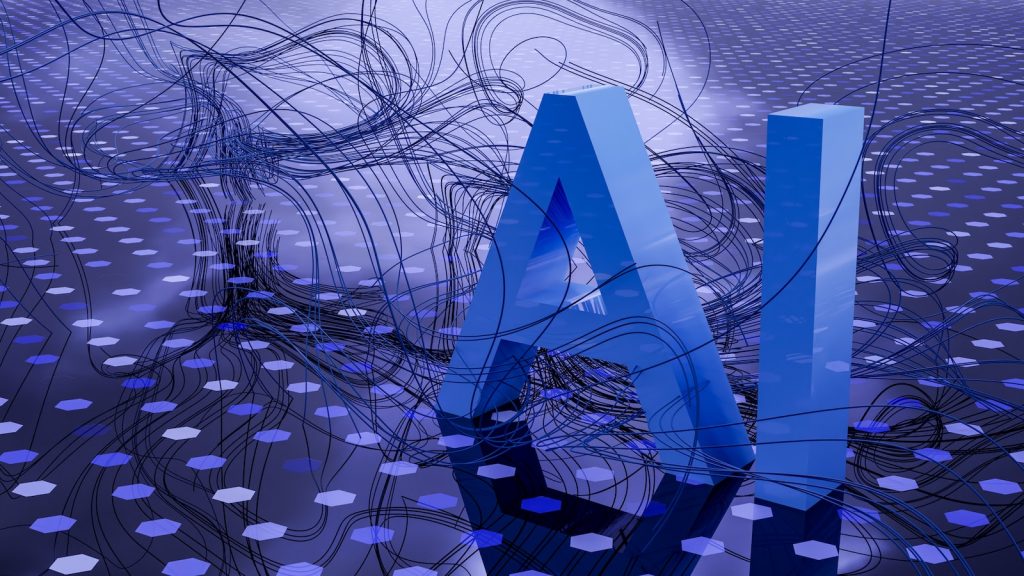The Great Divide: Open-Source vs. Closed AI and the Debate Fueling the Tech Industry

Two Camps of AI: Open-Source versus Closed
The debate on the future of AI is becoming increasingly divisive between two camps - one advocating for open-source and the other for a closed approach. On one hand, tech giants like Facebook's parent company, Meta, and IBM are championing an open-source notion for AI development. They recently launched a new group called the AI Alliance, which advocates for an "open science" approach to AI. Essentially, this calls for making the underlying AI technology widely accessible.
On the other side of the fence are Google, Microsoft, and AI development company OpenAI, who hold contrasting views favoring a closed model for AI. This approach would prevent the underlying technology from becoming broadly accessible.
What fuels this debate are pressing concerns about safety, accessibility, and profit in the unfolding era of AI. The advent of artificial intelligence holds immense potential, which can be a double-edged sword if not wielded responsibly. Ensuring secure and safe AI applications is a significant concern for both parties.
The accessibility of AI technology is another point of contention. The open-source camp, represented by the AI Alliance, advocates for a model that doesn't limit access to this pioneering technology. Members of this alliance encompass a diverse assembly of entities, including Dell, Sony, AMD, Intel, universities, and various AI startups. They are united in their support for open innovation, promoting open source and open technologies.
The prospect of profit from AI advancements adds another layer of complexity to the debate. The question of who can gain monetarily from AI's progress underpins the rivalry between the open and closed camps. It will likely continue to shape their respective strategies and lobbying efforts.
Understanding Open-Source AI and its Implications
Open-source artificial intelligence, or open-source AI, is based on inclusive access and universal availability. Modeled on the principles of an age-old practice that involves building free and open software for anyone to examine, modify, and develop further, open-source AI goes a step ahead. Here, it's not solely about the code; the AI technology and its diverse components are all made widely accessible to the community at large.
Exploring Open-Source AI
Defining open-source AI isn't a straightforward task. Computer scientists continue to differ on how it should be defined, with the primary points of contention revolving around which aspects of the technology are made publicly available and the degree of restrictions placed on its use. Some proponents prefer to describe the concept using the broader philosophy of 'open science.' This is a testament to the foundations of open-source AI, which encompass an open and democratic exchange of ideas and open innovation, including open-source and open technologies.
The AI Alliance, jointly led by IBM and Meta, brings together a coalition of corporate giants like Dell, Sony, AMD, and Intel, as well as several universities and AI startups. They collectively envision that the future of AI will be fundamentally rooted in the open scientific exchange of ideas and an open-source approach.
Risks Associated with Open-Source AI
Despite the numerous merits of open-source AI, there are also worrying risks and enigmas associated with it. One such concern is the considerable potential for misuse, especially in the age of disinformation and cyber threats. Giving universal access to AI technology and its components could potentially make it easier for malicious actors to manipulate the technology for unethical or harmful purposes.
A prominent entity that contradicts its namesake, OpenAI, the company behind ChatGPT and image-generator DALL-E, builds AI solutions that are, in fact, not open-source. Ilya Sutskever, OpenAI's chief scientist and co-founder, is quite direct in his articulation that while there may be short-term business incentives against open source, there is also a long-term concern related to the open accessibility of powerful AI systems.
For instance, Sutskever imagined a scenario where an AI system had become "mind-bendingly powerful" to the extent that it could start its own biological laboratory. Such a situation would undoubtedly make the system too dangerous to be publicly available due to the substantial risks of AI misuse. Consequently, this lends weight to the argument against open-source AI, which points out the potential threats propagated by unwavering access to extremely powerful AI systems.
Thus, while open-source AI can pave the way for inclusive and broad-based advancements in artificial intelligence, it is critical to remain aware of its implications and risks. Addressing these concerns should be an integral part of the discussions on the future of AI.
Controversy and Debate within the Tech Industry
The question of adopting an open-source vs closed-source approach to AI development has sparked a lively and frequent public debate within the tech industry. A key voice in this ongoing dialogue is Yann LeCun, Meta's Chief AI Scientist. LeCun has recently taken to social media to express his concerns about what he perceives as a move by several leading tech organizations to manipulate the development trajectory of AI for their own gain.
Scrutinizing Tech Giants
LeCun has critically highlighted Google, OpenAI, and AI startup Anthropic for what he describes as "massive corporate lobbying" to influence the formation of rules that favor their high-performing closed-source AI models. This, he suggests, could further consolidate their control over the future development of AI. These companies and Microsoft — a crucial partner to OpenAI — have formed the Frontier Model Forum, a collective expressively supporting closed-source AI.
While voicing his critique, LeCun also expressed his concerns about the rise in "doomsday scenarios" drawn by fellow scientists that could potentially thwart progress in open-source AI research and development. He advocates for an open-source approach to AI, arguing that this commitment to openness is essential to reflect the entirety of human knowledge and culture.
He says, "In a future where AI systems are poised to constitute the repository of all human knowledge and culture, we need the platforms to be open source and freely available so that everyone can contribute to them."
IBM's Stance on the Debate
IBM, a company that has been a long-term advocate of open-source technology, views this debate as an extension of a much older competitive spectacle that predates the AI boom. The company was an early supporter of the open-source Linux operating system back in the 1990s.
Chris Padilla, who heads IBM's global government affairs team, suggests that the attempt to stir up fears over open-source innovation is a tried-and-tested approach to disadvantage competitors. He posits, "It's sort of a classic regulatory capture approach of trying to raise fears about open-source innovation. This has been the Microsoft model for decades, right? They always opposed open-source programs that could compete with Windows or Office. They're taking a similar approach here."
The battle between the closed and open-source AI factions opens up a challenging debate. Each side has its own valid arguments and potential pitfalls, requiring a deeper understanding of the implications of both approaches as artificial intelligence continues to reshape our future.
Government Regulation and Actions
The issue of open-source AI hasn't gone unnoticed by government officials and regulatory bodies, particularly in the United States and the European Union, where significant steps are being taken to address and oversee the progression of artificial intelligence.
U.S. President Joe Biden's Executive Order on AI
Despite the burgeoning discussion around the implications of open-source AI, it was inconspicuous but not absent from U.S. President Joe Biden's substantial executive order on AI. Biden interestingly referred to open models within his order using the rather technical term "dual-use foundation models with widely available weights."
In the context of AI, weights are numerical parameters that impact how an AI model performs. If these weights of open-source AI are publicly posted on the internet, it could present both significant advantages for innovation and substantial security risks, such as the potential removal of in-built model safeguards, as stated in Biden's order. This illustrates the delicate balance between facilitating development and ensuring safety in the context of open-access AI.
In pursuit of effective regulation, President Biden has tasked U.S. Commerce Secretary Gina Raimondo with the responsibility of consulting industry experts and providing insights and recommendations on best managing the potential benefits and risks associated with this emerging technology by July.
European Union's Steps Toward AI Regulation
Meanwhile, in Europe, the quest to finalize pioneering AI regulation is on the fast track. With a rapidly approaching decision day on highly-anticipated AI laws, officials are energetically debating several critical provisions. One such provision that has become a contentious topic of discussion is whether "free and open-source AI components" should be exempted from the rules affecting commercial models.
Ultimately, major tech leaders have been staunch proponents of regulating artificial intelligence. Yet, in a competitive twist, they lobby ardently to ensure forthcoming regulations tilt in their favor. The open or closed-source AI debate, thus, continues to be argued within government corridors, shaping the framework of AI's future.

